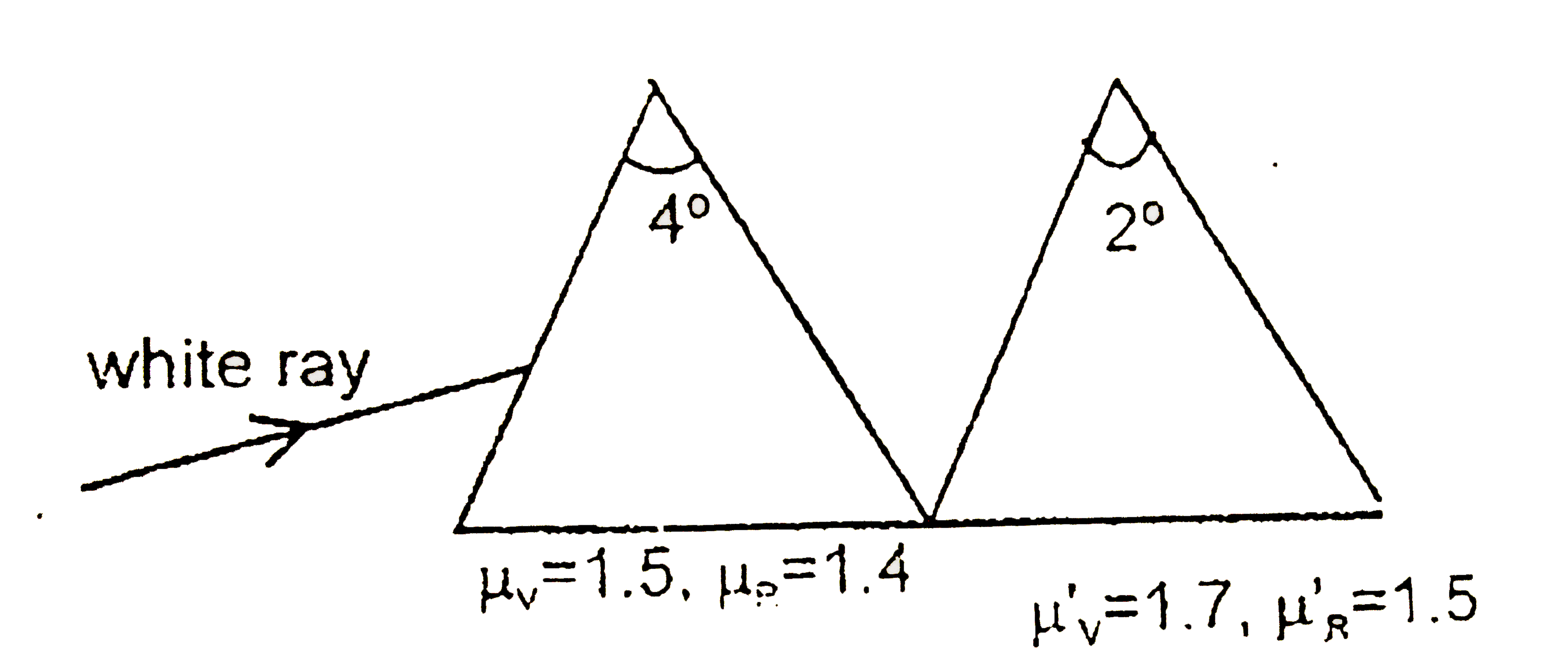For a given prism θandδ are angular dispersion and deviation. Correct relation is
θ∝δ
θ∝1δ
θ∝δ2
θα∝1δ2
The correct Answer is:A
Step by step video, text & image solution for For a given prism thetaanddelta are angular dispersion and deviation. Correct relation is by Physics experts to help you in doubts & scoring excellent marks in Class 12 exams.
Topper's Solved these Questions
- BOOK - AAKASH INSTITUTECHAPTER - RAY OPTICS AND OPTICAL INSTRUMENTSEXERCISE - ASSIGNMENT (SECTION - A)42videos
RAY OPTICS AND OPTICAL INSTRUMENTS
- BOOK - AAKASH INSTITUTECHAPTER - RAY OPTICS AND OPTICAL INSTRUMENTSEXERCISE - ASSIGNMENT (SECTION - B)30videos
RAY OPTICS AND OPTICAL INSTRUMENTS
- BOOK - AAKASH INSTITUTECHAPTER - RAY OPTICS AND OPTICAL INSTRUMENTSEXERCISE - EXAMPLE75videos
RAY OPTICS AND OPTICAL INSTRUMENTS
- BOOK - AAKASH INSTITUTECHAPTER - PHYSICAL WORLDEXERCISE - ASSIGNMENT (Section-B)5videos
PHYSICAL WORLD
- BOOK - AAKASH INSTITUTECHAPTER - SEMICONDUCTOR ELECTRONICS (MATERIAL, DEVICES AND SIMPLE CIRUITS )EXERCISE - Assignment SECTION - D (Assertion & reason type Question)10videos
SEMICONDUCTOR ELECTRONICS (MATERIAL, DEVICES AND SIMPLE CIRUITS )
Similar Questions
Knowledge Check
- Question 1 - Select One
In dispersion without deviation
AThe emergent rays of all the colours are parallel to the incident rayBYellow coloured ray is parallel to the incident rayCOnly red coloured ray is parallel to the incident rayDAll the rays are parallel, but not parallel to the incident ray - Question 2 - Select One
The net angular dispersion without deviation is equal to
Aδ(1−ωω′)Bδ(1−ω′ω)Cδ(ω′−ω)Dδ(ω−ω′) - Question 3 - Select One
The angular dispersion produced by a prism
Aincreases if the average refractive index increasesBincreases if the averge refractive index decreaseCremains constant whether the average refractive index increases or decreasesDhas no relation with average refractive index.
Dispersion OF Prism
View SolutionExplain the terms angular dispersion and dispersive power. How are the two related ?
View SolutionIf two prisms are combined , as shown in figure, find the total angular dispersion and angle of deviation suffered by a white ray of light incident on the combination.
 View Solution
View SolutionThe angular dispersion produced by a prism
View SolutionAssertion: Two prisms of different materials can be used to attain a condition of angular dispersion without mean deviation.
Reason: When two prisms of appropriate materials and refracting angles are oppositely directed then mean deviation produced by one can be cancelled by the other due to opposite sense.View Solution
